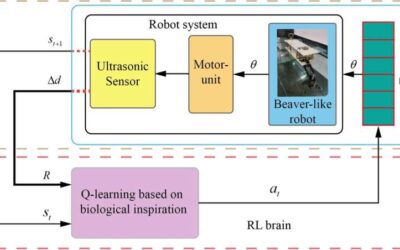In recent years, engineers have been trying to devise new computers and devices that could help to solve challenging real-world problems faster and more efficiently. Some of the most promising among these are Ising machines (IMs), physics-based systems designed to...
Engineering
An approach to produce elaborate flying maneuvers using morphing-wing drones
Unmanned aerial vehicles (UAVs), or drones, are already widely used in various real-world settings, including the film industry, the military, and the transport sector. In the future, they could also be used to assist human agents during search & rescue missions,...
New natural hydrogel inks for digital light processing 3D printing
Researchers at Politecnico di Torino, BRIN in Indonesia, the Italian Institute of Technology (IIT) and University of Cagliari have recently introduced new composite hydrogel inks based on natural and environment friendly materials, which could be used to 3D print...
A new solution to cool electronic devices and prevent them from overheating
Electronic devices, including smartphones and tablet portable computers, are becoming increasingly advanced and compact. As their performance increases and their size decreases, these devices generate more heat, which can reduce their safety and cause them to break.
A beaver-inspired method to guide the movements of a one-legged swimming robot
When developing new technologies, computer scientists and roboticists often draw inspiration from animals and other living organisms. This allows them to artificially replicate complex behaviors and locomotion patterns to enhance their systems' performance, efficiency...
A reconfigurable robotic system for cleaning and maintenance
Reconfigurable or "transformer" systems are robots or other systems that can adapt their state, configuration, or morphology to perform different tasks more effectively. In recent years, roboticists and computer scientists worldwide have developed new autonomous and...
A new micro aerial robot based on dielectric elastomer actuators
Micro-sized robots could have countless valuable applications, for instance, assisting humans during search-and-rescue missions, conducting precise surgical procedures, and agricultural interventions. Researchers at Massachusetts Institute of Technology (MIT) have...
Curve Light: A highly performing indoor positioning system
In recent years, engineers have been trying to develop more effective sensors and tools to monitor indoor environments. Serving as the foundation of these tools, indoor positioning systems automatically determine the position of objects with high accuracy and low...
A soft jig that could enhance the performance of general-purpose assembly robots
As robots become increasingly advanced, they are being trained to complete a wide variety of tasks. Some roboticists have been specifically exploring the potential of robotic systems that can assembly items without much human supervision, as this could significantly...
Researchers create a scanner for fingerprints and documents using metal halide perovskites
Metal halide perovskites are a large class of crystalline materials with numerous advantageous features, including a high light absorption coefficient, high charge mobility and strong photoluminescence. Due to their unique properties, metal halide perovskites have...










